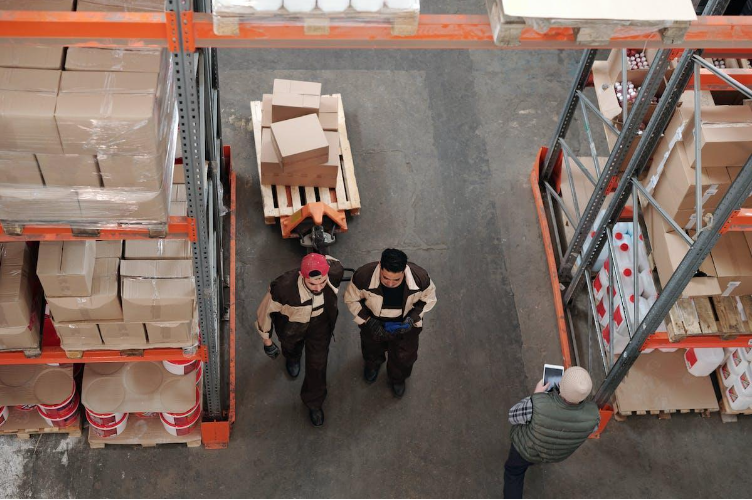An efficient supply chain plays a vital role in meeting customer demands and staying competitive in today’s dynamic world of online shopping. Sure, it can involve multiple steps and stakeholders, but you can always streamline your supply chain and logistics and maximize productivity by taking a few measures. Read on to find out what they are.
1. Leverage Logistics Software
Nowadays, most logistic companies are implementing a logistics management software that ties together order manifestation, warehouse management, order fulfillment, external courier API integrations, payment gateways, and more. Besides giving you a centralized location to track and monitor your entire supply chain, these solutions can also power emerging technologies like AI and machine learning to allocate delivery zones and batches. This way, delivery drivers collect all the packages they have to deliver in one trip in the zone assigned to them. It helps save time moving around, especially in warehouses with lots of small orders.
2. Improve Demand Forecasting
Sometimes, supply chain professionals see inaccurate demand forecasting as the most significant supply chain mistake. Poor forecasts lead to improper inventory levels, production overages or shortages, high expedited logistics costs, and more. By leveraging historical sales data, emerging trends, and predictive analytics, you can improve demand planning significantly. It keeps inventory aligned with actual demand.
3. Conduct Supply Chain Analysis
Before optimizing your supply chain, conduct a detailed analysis of current inefficiencies. A 2022 report found that the top causes of supply chain disruptions were talent shortages, illnesses, and transportation issues. Look for bottlenecks slowing things down, wasteful business processes that can be eliminated, and opportunities to leverage new technology or automation. Remember, having a greater amount of data means you can make more informed decisions.
4. Optimize Inventory Levels
Inventory overstocking costs money. Too little inventory, sales are lost and customers are angry. The right number of each product in stock helps alleviate inventory difficulties including high storage costs and out-of-stock items. Inventory levels can be easily optimized through historical data analysis, improved demand forecasting, safety stock calculations, and closely tracking inventory metrics.
5. Transition Freight to Intermodal Shipping
The global intermodal freight transportation industry, which was valued at US$54.8 billion in 2022, is expected to increase to US$171.5 billion at a compound annual growth rate (CAGR) of 15.3% from 2022 to 2030 when it is expected to reach a revised size of US$171.5 billion, and for good reason.
By utilizing multiple means of transport, intermodal shipping drives significant cost and time efficiencies compared to point-to-point trucking. For example, combining rail and truck shipping minimizes long-haul road transport costs. Similarly, incorporating ocean or air shipping can expedite customs and cut miles when products come from overseas.
Mapping out an enhanced intermodal network per product line reduces touches and streamlines cross-docking, although we must admit, it does require enhanced coordination.
6. Leverage Third-Party Logistics (3PLs)
Work with experienced 3PL partners to tap into proven expertise and capacity that is not easy to build in-house. It might include regional or long-haul transportation, warehousing and distribution, freight forwarding, customs brokerage, or turnkey logistics management. As you grow, 3PLs provide flexibility to scale up operations without immense capital investment. But carefully vet partners, maintain visibility across operations, and use analytics to verify service levels and cost efficiency.
7. Consolidate Shipping
Look for ways to consolidate less-than-truckload (LTL) shipments into full truckloads for lower freight costs. Also, negotiate discounts with fewer carriers by sending them more volume in each load. Reduce transfer points and handle more logistics in-house instead of relying on intermediaries that mark up costs.
8. Embrace Autonomous Transportation Solutions
A recent poll found that 37% of businesses already use automation and machine learning in their supply chain—another 36% plan on implementing these technologies soon to boost efficiency. New autonomous trucking and last-mile delivery solutions can reinvent modern supply chain operations by:
enhancing safety
increasing asset utilization
reducing labor costs and risks
expanding capacity, all providing a competitive edge.
9. Streamline the Ordering Process
Set up integrated ordering across sales channels tied to a central inventory database. Hence, order info flows seamlessly to warehouse staff for prompt fulfillment.
Enable electronic data interchange (EDI) with customers and suppliers to exchange order data digitally without manual purchase orders.
Offer e-commerce ordering with seamless payment processing to replace phone, fax, and email orders. Add features like a robust digital catalog, shopping cart, and self-service account management functionality.
Apart from increasing fulfillment speed and order accuracy, this technique minimizes manual errors in order management and provides customers and vendors with more intelligent self-service options.
Final Thoughts
Streamlining supply chain and logistics requires a holistic approach to achieve a lean business model and identify optimization opportunities, leverage tech-enabled solutions, minimize waste and delays, enhance visibility and control, and embrace innovation.


